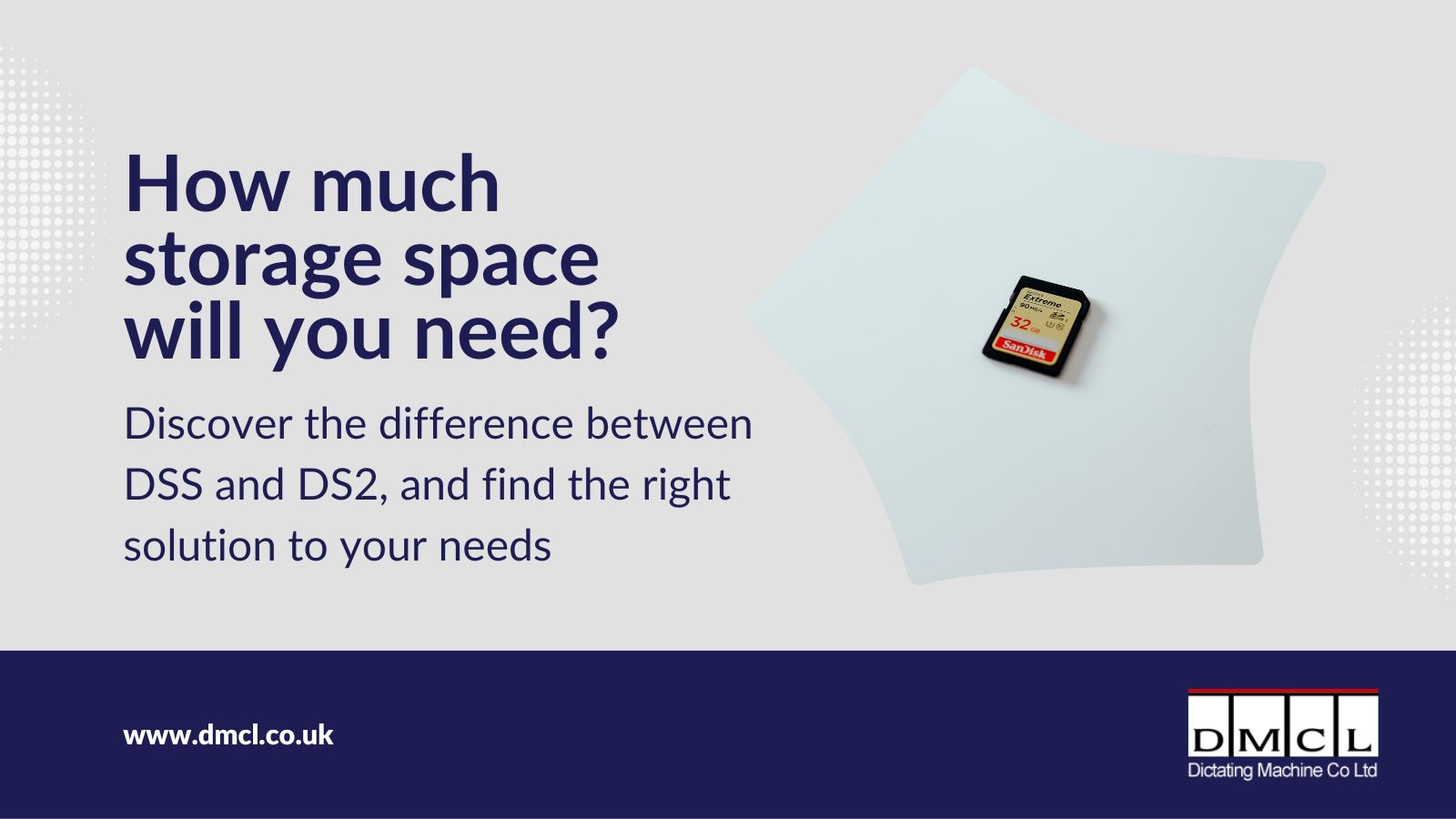
When you’re shopping for a new digital recorder, there’s a lot of jargon that can feel overwhelming. What’s the difference between DSS and DS2? Why does one use more space than the other? How much space will you really need in order to get the most of your digital recorder? At DMCL, we’re here to help.
When you’re looking through the key features of our top-of-the-line digital recorders, you’ll be impressed with superior audio technology designed to pick up every word you say in crystal clarity. You may be drawn in by the large colour displays and intuitive user interfaces, tailor-made to ensure that operating your new recording device is easy to use. You might be looking for long-lasting battery life, to make sure that you never run out of juice while you’re recording on the go.
However, if storage space is what matters most to you, it can be difficult to get a steady grip on what your options are. And in order to know what you’re looking for, you’ll need to know what DSS and DS2 are. So first, a history lesson.
In response to a need for high quality speech and professional dictation solutions, Digital Speech Standard (DSS) was developed in 1994 by Grundig - before Olympus, Grundig and Philips formed the International Voice Association (IVA). The DSS format was improved and published in 1997, and over the following decade, the IVA developed and introduced it to the world.
DSS utilised a high compression rate, which basically means that files using the DSS format are easy to manage and widely used. With DSS, dictations could be compressed into tiny file sizes, meaning that users could transfer them quickly, copy them easily, and get away with smaller storage.
DS2 was a further development of the idea - compressing audio files with support for better sound quality, and adding something new - encryption. By encrypting the files, users could transfer and share them with confidence that their recordings would be protected, especially with confidential dictation data.
So, to put it simply, DSS and DS2 are easy-to-transfer formats, with the option to protect your recordings for added security when you’re transferring and copying your files. They have the benefit of taking up less space, leaving you as much room as possible - but you’ll still run out of space eventually.
A 16GB SD card will give you about 2576 hours of DSS recordings, or 1256 hours of the higher-quality, encrypted DS2 recordings. That’s more than enough for most people (107 days of solid recording time) but if you’re still concerned that you might run out of space, moving up to the 32GB SD card will offer you 5152 hours of DSS, and 2512 hours of DS2.
Get in touch with our experts today to get advice on how much storage you’re likely to need, or check out our full catalogue of products and services online.

